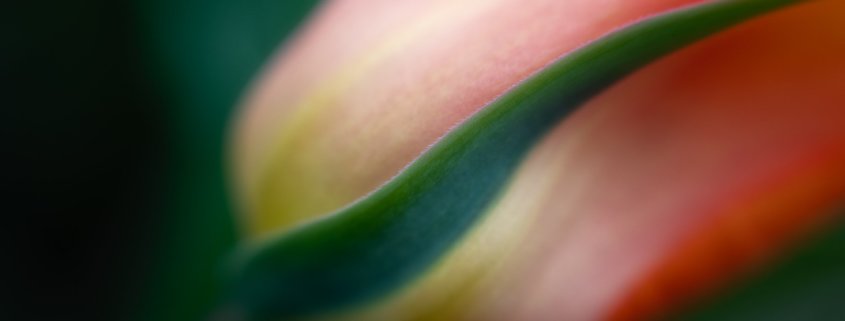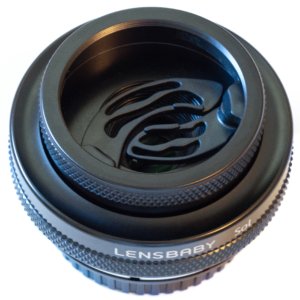Creative Flower Photography with Lensbaby Sol Series
In a previous article I wrote about my love for the Lensbaby Velvet 56mm and 85mm lenses. Now I’d like to introduce you to another member of the Lensbaby family – the Sol. The Sol 45mm, for Canon, Nikon, Sony, Fuji and Pentax mounts, and the Sol 22mm for Panasonic and Olympus Micro 4/3 mounts was released in August, 2018. This little powerhouse of a lens creates a sweet spot of focus surrounded by beautiful blur and bokeh. If you love shooting with selective focus, this lens is a great addition to your camera bag and is guaranteed to ignite your creativity and bring some fun to your photography.
More About the Lensbaby Sol Family
As with all Lensbaby lenses, the Sol is a manual focus lens. Lensbaby lenses do not connect electronically with your camera. Moreover, the lens information and aperture will not be recorded in your EXIF data. Depending on your camera brand, you will either need to shoot in aperture priority mode or manual mode. Similarly, in some camera models you may need to go into your menu to set the camera to shoot without a lens.
So, why do I love these lenses and how does it help give a creative boost to my work? First, I have to admit that I was a bit skeptical the first time I took my Sol 45mm out for a test run. I was not sure I would like working with a fixed aperture lens. The Sol lenses can only be used at f/3.5. As a macro and flower photographer, aperture is very important to my work. I am constantly experimenting with aperture to create my vision of a botanical subject. I rarely shoot in one aperture, but choose to shoot in a range to ensure I come home with choices and a successful interpretation of my subject. Limiting myself to one aperture seemed a little unnerving to me.
It was just that feature, however, that gave me a sense of creative freedom. By not having to worry about changing aperture, I was simplifying my shooting and I found myself concentrating more on the creative and expressive aspects of my photography. When deeply delving into shooting in one aperture, I was able to more fully explore the possibilities. Let’s face it, f/3.5 is an aperture that produces beautiful results for selective focus. It’s both fun and challenging to dance on that edge of focus and embrace the beautiful blur. The simplicity of use, the small size and the light weight of the lens also give a sense of freedom. It just feels good in my hands and I’m easily able to handhold this lens with great results.
Let’s look at the components that make this lens special and fun to use.
#1 – Play with the Selective Spot Focus
The Sol gives you a sweet spot of focus surrounded by beautiful blur. I recommend that you center compose your subject the first time you shoot with this lens. Shoot with the lens straight ahead and practice finding your focus by turning the focus ring in the front of the lens. With center composing, you can lock the lens into place straight ahead so it doesn’t move. With such a shallow depth of field at f/3.5 you have to be accurate in your focus.
When using selective focus, it’s important to determine what is your most critical point of focus. It might be the center of the flower as in the image below, or a petal edge or a stem, as in the images above. Take a minute to determine what it is you want to draw the eye to, keep your eye on that area as you turn the focus ring to bring it into sharp focus. Unlike the Velvet lenses which have some glow built in that can make it difficult to attain focus, the Sol is very easy to see the focus.

Center Photography Composition with the Lensbaby Sol 45mm
#2 – Experiment with Tilt Function
After getting the hang of focusing in the center, try composing off center and tilting the lens. The tilt function of this lens allows you to change that sweet spot of focus within the frame. The lens will tilt in all directions – horizontal, vertical and diagonal. Choose what you want to draw you eye to in the frame. Then compose your subject and tilt the lens toward that area. Simply turn the focusing ring in front to bring the subject into focus.
You will know you have the lens tilted correctly if the area you are drawing the eye to comes into sharp focus. If it doesn’t, adjust the tilt slightly and try again. For example, I use the grid in my viewfinder to help me determine where my most important point of focus falls in the frame and I tilt accordingly. If you have focus peaking technology in your camera, use that to help you attain focus. In the image below, I have determined that I want the bright yellow center of the flower in sharpest focus. I tilted the lens slightly to the right.

Creative Photography with Lenbaby Sol 45mm – Tilted Slightly to the Right to Focus on the Center of the Dahlia.
#3 – Be Creative with Bokeh Blades
What are these crazy bokeh blades? The bokeh blades, pictured below, add a playful and creative feature to the lens. Try engaging the blades in front of the lens, swivel them into different positions (horizontal, vertical or diagonal) and play with creating interesting texture and lines to your background. The blades work best when you include background that is separated from your subject. So pull back a bit. Also, include more background so that the texture is more apparent. When using the bokeh blades you are shooting at an aperture more equivalent to f/5. If that look doesn’t suit you, simply push them back and embrace the simple and beautiful bokeh and blur the lens produces without the blades.
#4 – Don’t Forget to Capture Macro Photography Images.
As a macro photographer, it’s always important to me that a lens have macro capability. The Sol 45mm has a minimum focusing distance of 14 inches, the Sol 22mm at 3.5 inches. This lens can be used for a variety of genres – landscape, urban, portrait and macro photography, all with creative results. If you want to get in close and shoot macro with the lens you need to add the Lensbaby 46mm macro filters to the front of the lens. The macro filters come in +1, +2 and +4 strengths and can be used separately or stacked together to get in even closer. Alternatively, you can use traditional extension tubes between your camera and the lens to get in closer. If you like using the bokeh blades, extension tubes may be your best bet since they don’t cover the front of the lens like the macro filters do.

Macro Photography with Lensbaby’s Sol Family.
One of the hardest variables to control in macro photography is your background. Producing a good clean background free of distractions is just as important as a beautiful subject. Thankfully, this lens creates some of the most stunning backgrounds I have seen from any lens straight out of camera. The ability to control the background so effortlessly adds to the sense of creative freedom this lens gives. Knowing I will not be struggling to correct a less than perfect background later in post processing adds to the fun of shooting with this lens. All the images in this article have backgrounds straight out of camera.
For someone new to the Lensbaby family, the Sol is a fun and inexpensive way to dive into the world of creative effects lenses. It is lightweight and simple to use and takes up next to no space in your camera bag. For an experienced Lensbaby user, this lens is a fun addition that will bring back a more playful, creative way of shooting.












Thank you very much for the information much needed. I also love macro photography. Currently shooting with Olympus OMD EM1 crop factor 2x. Love my macro lens but looking into buying a first Lensbaby. Not sure should I get Sol 22 or 45mm ? Also like street photography. Thank you very much would appreciate your advice.
Rita, I’m glad the post was helpful and inspired you to buy a Lensbaby. For your Olympus camera you would buy the Sol 22. It is especially made for Olympus and Panasonic micro 4/3. If you want to work up-close, you will need to buy the 46mm macro filters, as well. You will love the Sol for macro work but it will also produce beautiful results for street photography. I find it the easiest to focus and easiest to use of the Lensbabies. It is lightweight and small and just seems to unleash creative shooting. Please don’t hesitate to reach out to me via my website contact link if you have other questions or need further guidance. Always happy to help!
Hi Anne, I’m new to Lensbaby and just got your ebook and the Sol 45 for my Nikon Z. I’m looking forward to using the tips from this article and your ebook to help me get started. I have a feeling I will probably be purchasing macro lenses or extenders next! :)
Hi Tanya! I’m so excited to hear you are starting your love affair with Lensbaby. You will love the Sol and I would definitely recommend getting the macro filters so you can move in close with your subjects. Feel free to reach out to me via my email (in the book) or my website if you have questions about anything. Have fun!
Hello Anne
Having no experience with Lensbaby, I’m intrigued by your article. Would you suggest a Sol 45 as my first purchase as I attempt some different looks with my photography? I use a Nikon D7200.
Kind Thanks.
Teresa
Hi Teresa! Thanks for commenting! I would recommend one of two lenses to start with Lensbaby – the Velvet 56mm (most appropriate for a crop sensor camera) or the Sol 45mm – both come in Nikon mounts. The Velvet will give you that beautiful ethereal glow and a range of apertures to work in. The hardest part is learning to focus. I have many tips in both my article on the Velvets here on Visual Wilderness and in my eBook. The Sol 45mm is a fixed aperture lens at f/3.5 so you don’t have the choice of apertures to work with, but it is a wonderful, creative lens and very easy to use and focus. As you know, I use it a lot and have fallen in love with it. Knowing your work and your style, I think you would find the Velvet a more versatile lens, a great starting point, and you would really enjoy a new way of seeing and shooting your subjects. Although the Sol 45mm would be a great fit, too, I normally suggest it as a second lens. The thing about Lensbaby is that you won’t just own one…it becomes a bit of an addiction and your photography will really blossom and become more creative with these lenses. You know where to find me if you have more questions – I’m happy to walk you through it!
Hello Anne …wonderful thanks for responding to me! I gather these lenses are addicting, based on comments of others. Thanks for your suggestion of starting with the Velvet. Decisions, decisions, decisions!!
Teresa…you can’t go wrong with either but I have a feeling about the Velvet for you. I think you would do beautiful things with that lens. Yes, an addiction for sure, but take it slow and master each one.